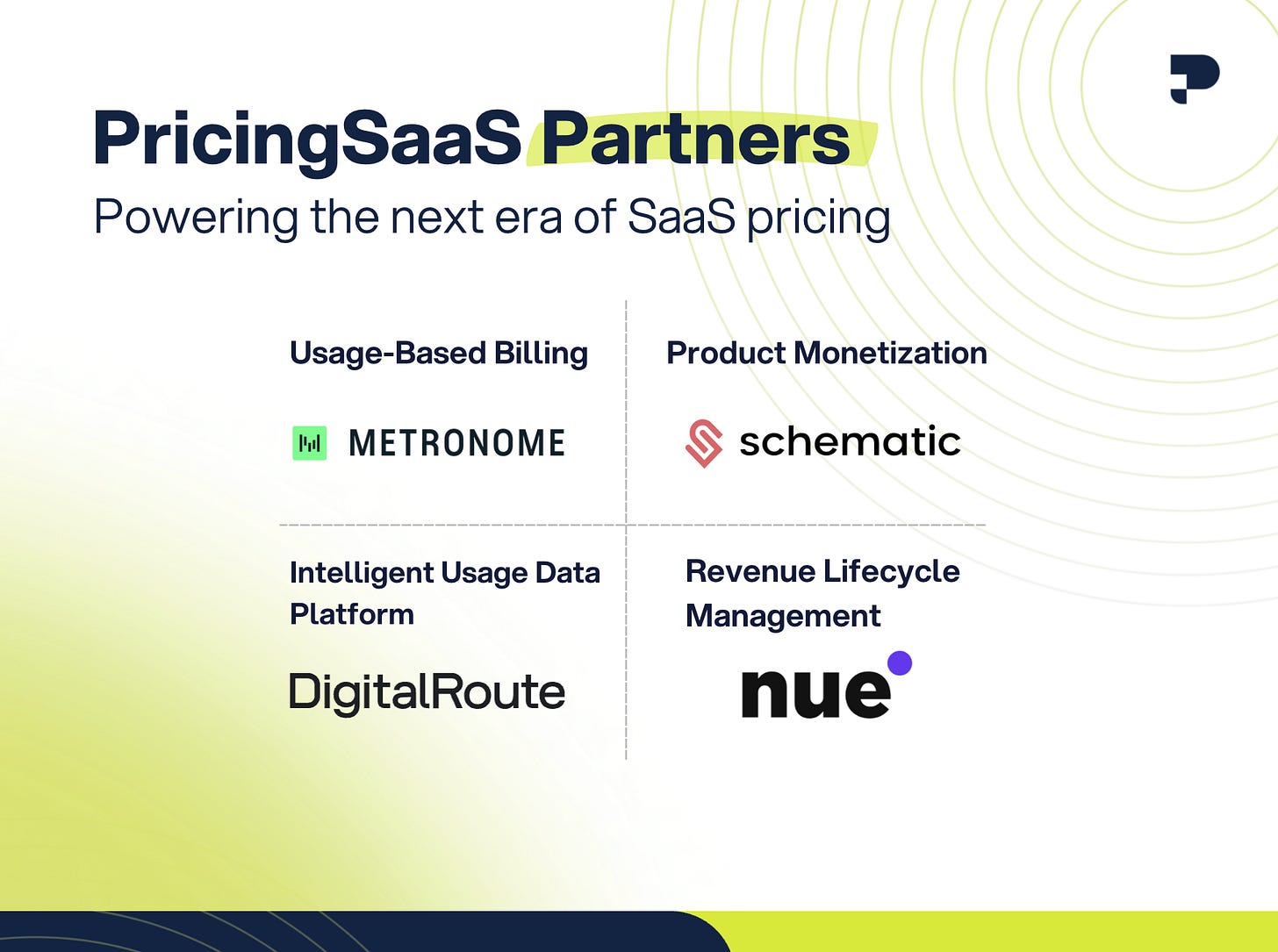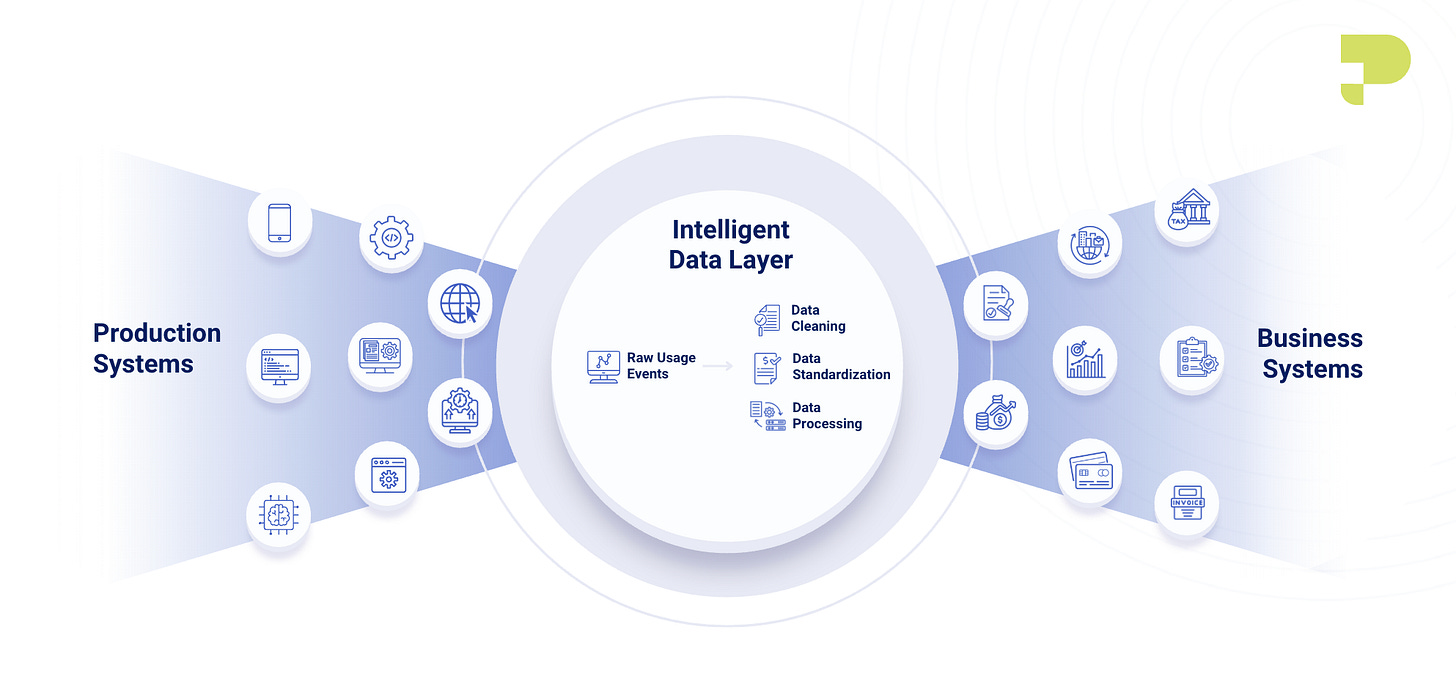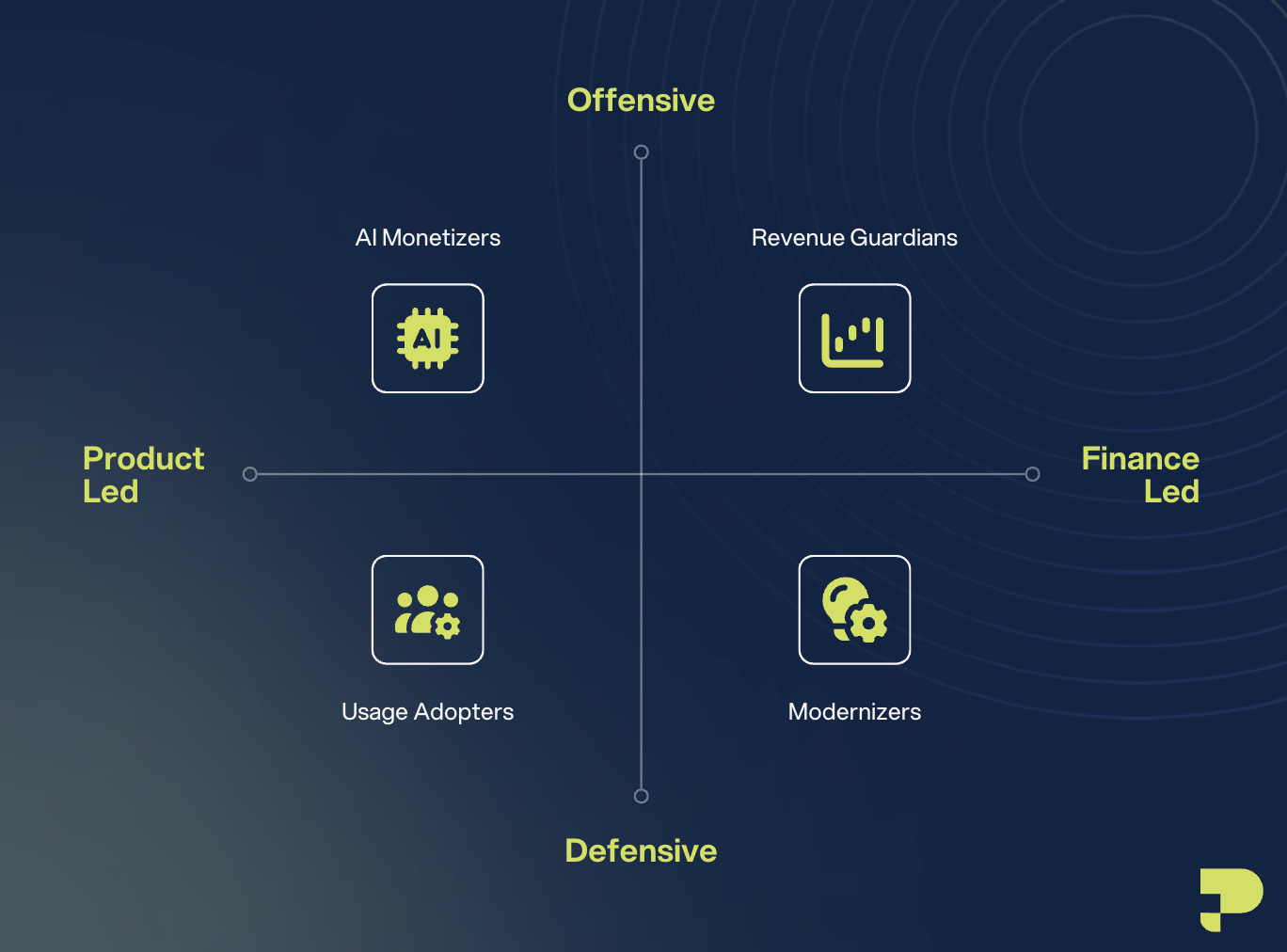Want to see where SaaS pricing is headed? Look at Telecom
Changes from OpenAI, Canva, Monday.com, Awesomic, and Pinecone.
Every week, we provide research and resources to help SaaS leaders make smarter pricing and packaging decisions. Get our latest research to stay ahead of the curve.
🔌 PricingSaaS Partners power the next era of SaaS pricing
DigitalRoute is hosting a Usage Data Roundtable on 11/19. Register here →
Metronome wrote a Guide to Hybrid Pricing Models. Give it a read →
Nue.io hosted Ben Murray, “The SaaS CFO” on The Lift. Give it a Listen →
Schematic is offering Pricing Therapy. Book a 30-minute session →
OpenAI expanded data residency.
Canva retired the Teams plan, folding it into Business.
Monday.com launched a Campaigns product.
Awesomic added new features across multiple products.
Pinecone added a new pricing metric.
Explore more changes from Docusign, ClickSend, and 15Five at PricingSaaS →
📌 Save the Date: Thursday, November 13th at 9am EST
Ulrik Lehrskov-Schmidt and the team at Willingness to Pay are hosting a webinar next Thursday on SaaS pricing for hardware companies. Register here →
The future of SaaS pricing looks like Telecom
There’s never been a more interesting, or volatile, moment in SaaS pricing.
For nearly two decades, software companies lived in the golden age of predictability. The seat-based subscription model made revenue easy to forecast, margins sky-high, and investors happy.
But that era is ending.
AI has changed the math. What used to be an 80–90% margin business is moving closer to 40–50%. Every API call to an LLM has a cost. Every query adds up.
If you can’t see or measure how customers are using AI inside your product, you’re not just flying blind, you’re watching your margins evaporate in real time.
This shift may feel unprecedented, but we’ve seen this movie before — in another industry where subscriptions reign supreme.
What the Mobile Revolution can teach us about AI
In the early 2000s, telecom companies faced a seismic shift. The world was moving from landlines to mobile, and that transformation unleashed a tsunami of usage data.
Operators suddenly needed to track and monetize billions of events every day (who called whom, for how long, across what network, and at what rate). It was chaos.
That’s where DigitalRoute entered the scene.
DigitalRoute helped telecom companies make sense of this flood of information — capturing, cleaning, and transforming raw usage data into the lifeblood of modern telecom billing.
“First of all, a landline phone call is a pretty complex thing,” says CEO Andreas Zartmann. “But turning all of that into digital becomes even more complicated. And on top of the core platform play that the telecom networks allow, there were a lot of new services coming along that influenced pricing and packaging.”
Instead of just a few million voice calls per day, the digitization of telecom introduced billions of new, complex data events. This began with basic SMS functionality, but later evolved to include digital services such as mobile internet and streaming.
Zartmann believes AI will cause a similar explosion in SaaS. He believes the companies that survive this moment will be the ones that become obsessed with usage data — and build pricing models grounded in it.
Entering the “Living Monetization Era”
Ari Vänttinen, DigitalRoute’s CMO, describes the last 15 years as the “first generation of SaaS monetization.” It was predictable, investor-friendly, and easy to scale — but it also made everything look the same.
“We built the first generation of SaaS to be convenient for CFOs and predictable for investors,” he says. “But it killed pricing innovation and differentiation.”
Now, we’re entering what DigitalRoute calls the Living Monetization Era — where pricing becomes dynamic, flexible, and constantly evolving. It’s no longer about setting and forgetting a model; it’s about learning from customer behavior and adapting in real time.
AI is accelerating this shift faster than anyone expected, but when SaaS leaders try to move toward usage-based or hybrid pricing, they often run into the same wall: data.
Nearly every SaaS company tracks product usage, through telemetry events, billing metrics, or both, but as they grow, that data becomes chaotic. It’s scattered across tools, logged in inconsistent formats, and fragmented across teams with different goals and priorities.
As Andreas puts it:
“Almost all companies build some form of usage tracking into their production systems. But when they grow, it doesn’t scale. You end up throwing developers at it again and again. Every new pricing experiment becomes a coding project.”
This approach means every change you make — new feature, new plan, new model — means re-wiring your systems. It kills speed and introduces errors. And that’s before you even start billing customers.
The takeaway? Under the surface, many pricing problems are actually data problems.
DigitalRoute’s Playbook to Future-Proof Your AI Pricing
Digital Route’s solution consists of a 3-step playbook:
Decouple usage data from production and billing
Rewire for flexibility and scale
Make AI costs visible and manageable
The first step is deceptively simple but incredibly powerful: decouple your usage data from both your product and your billing system.
Think of your architecture as three layers:
Production systems — where usage happens.
Business systems — where pricing, billing, and finance live.
The intelligent usage layer — a real-time mediator between the two.
This middle layer collects raw usage events from your product, cleans and standardizes them, and then feeds them downstream to billing, analytics, and forecasting tools.
In telecom, this process is called mediation. In SaaS, it’s becoming essential infrastructure. Without that “usage plumbing” layer, the rest of the stack is unstable. You can’t experiment with pricing if your data isn’t trustworthy.
Ari put it this way:
“We sit between the production problem and the business problem. We’re the peacekeeping force in between.”
That peacekeeping force matters because usage data isn’t just for billing. It powers three critical functions:
Monetization: clean data ensures you charge correctly.
Customer experience: accurate usage data prevents billing disputes and improves trust.
Operational efficiency: usage patterns inform capacity planning, product optimization, and AI cost control.
Without that middle layer, you’re risking inaccuracies across all three.
The second step is to rewire your internal systems for flexibility and scale.
The usage data layer becomes the core of every digital service, supporting scalability across products, price plans, and platforms.
As SaaS markets mature, the need for rapid iteration on pricing and packaging will only increase. Andreas views AI as a massive catalyst for dynamic pricing, but with very real cost challenges:
“Over the last 10 to 15 years, SaaS companies built a lot of platforms and scaled fast. But they’re starting to hit a wall. Markets are maturing, and these companies can’t scale without adding new functions onto their platform or service. AI is this monumental shift — it’s a third-party technology sitting on top of these platforms that can enable them to scale, but it actually costs something as well.”
The ability to model, test, and deploy new pricing fast, without rebuilding your billing stack, is the difference between leading and lagging.
The third step is to make AI costs visible and manageable so they can be properly distributed.
In telecom, mediation enabled accurate billing. In SaaS, it enables something just as critical: chargebacks.
Usage data is essential for more than just billing – it’s critical for internal cost allocations or “chargebacks” so organizations can trace and allocate AI costs to the teams or customers that generate them. By utilizing real-time anomaly detection and forecasting at the usage data layer, companies can proactively identify cost spikes, usage trends, or inefficiencies in real-time, thereby improving visibility into costs.
This level of visibility helps inform better pricing decisions, and gives companies more margin control. As a former CFO, Andreas understands this acutely:
“AI is a massive cost that is suddenly running through SaaS P&Ls,” Andreas notes, “and the CFO has no clue how much it’s going to cost because it’s directly related to the consumption of the end customer.”
That’s where intelligent usage data comes in — giving finance leaders the visibility to allocate costs, monitor margins, and forecast in real time.
The Four Use Cases for an Intelligent Usage Data Platform
Across its customer base, from SaaS to cloud infrastructure to finance, Digital Route sees four core archetypes emerging:
AI Monetizers: Companies adding AI-driven features that need usage-based pricing. Many are realizing they can’t charge a flat “AI premium” forever. They need to measure and monetize actual consumption.
Usage Adopters: Traditional SaaS companies shifting from seats to usage to stay competitive.
Modernizers: Firms replacing homegrown telemetry or data pipelines that no longer scale.
Revenue Guardians: Finance teams looking to control AI costs, allocate expenses, and stop revenue leakage before it starts.
As Andreas puts it:
“Whatever you do, ask yourself how much of your revenue depends on the data that goes into your monetization workflow. If it’s 100%, you should probably rethink how you manage that data.”
Each of these groups is discovering that pricing transformation starts with data transformation.
From Optional to Essential
For years, usage data has been considered a “nice to have” — something product teams looked at when they wanted to understand engagement or churn.
Today, it’s a survival tool.
AI models are expensive. Customers expect transparency. And CFOs need forecasting, not after-the-fact reports.
“When your data is wrong, it’s not just a margin problem,” Ari said. “It’s a customer experience problem. If the invoice doesn’t match their experience, that trust is broken.”
We’re entering a reality where every company will have AI embedded somewhere in its product, and every one of those features will generate variable costs. That means every SaaS company, whether it likes it or not, will become a usage-based company.
The winners will be those that:
Build flexible pricing powered by clean usage data.
Maintain trust through transparent reporting.
Forecast and control AI costs in real time.
For a peek at the future of SaaS, look no further than telecom. If you glance at your last wireless bill, the complexity beneath the surface is invisible — every byte, minute, and roaming event perfectly captured and translated.
As Andreas and Ari put it, that’s the magic of intelligent usage data. When an industry learns to measure, mediate, and monetize usage at scale, monetization becomes effortless. SaaS is next.
Join us on Wednesday, November 19th for the Usage Unlocked Roundtable where we’ll be going deep on usage, monetization trends, and real-time billing data.
Thanks for reading! When you’re ready, here’s how we can help:
PricingSaaS Community: Join the free PricingSaaS Community to get quick answers from experts, real-time pricing data, and access to exclusive events.
PricingSaaS Index: Check out the PricingSaaS Index to track competitors, scroll pricing histories, and create a swipe file of pricing pages for inspiration.
Free Advisory Session: Need a sounding board? Book a 30-minute session. No sales pitch. We’ll provide honest feedback and steer you in the right direction.







Really great insights on the pricing infrastructure evolution.
One gap I see consistently: companies focus on billing platforms but overlook the critical data mediation layer that sits between usage generation and billing systems. When you move to consumption-based models, especially with AI workloads, accurate real-time usage data capture becomes the make-or-break factor....You can have the best billing system, but if your usage data isn't validated with financial-grade accuracy, you'll leak revenue. Always!